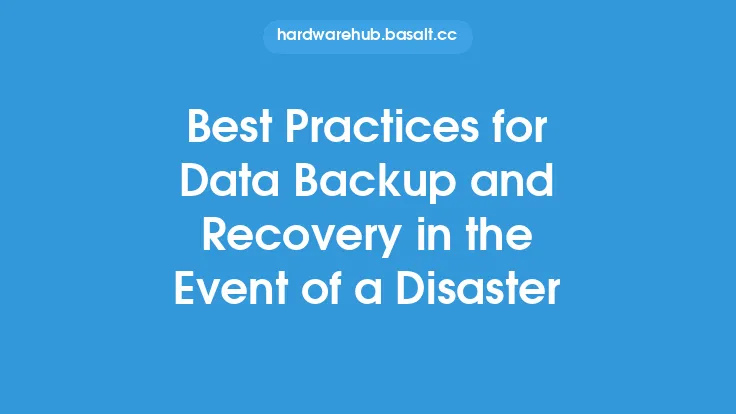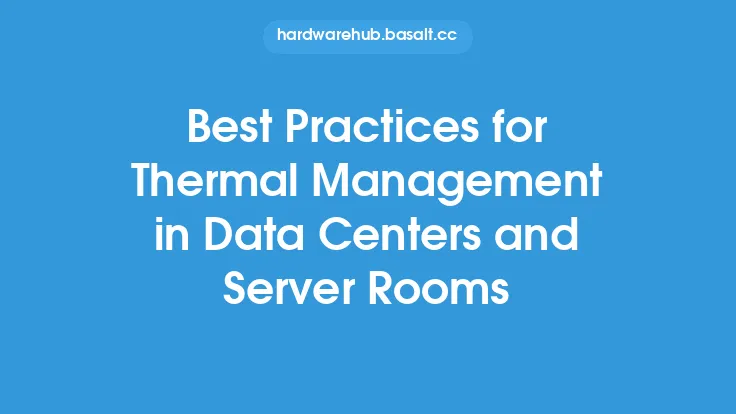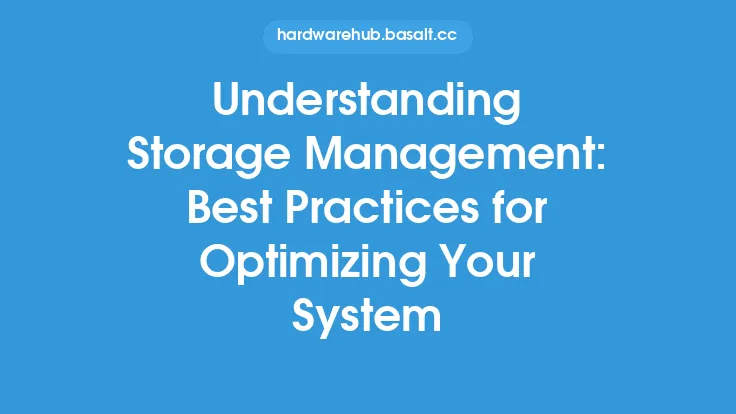When it comes to storing sensitive data, security is of the utmost importance. Sensitive data can include personal identifiable information (PII), financial information, confidential business data, and more. The consequences of a data breach can be severe, including financial loss, reputational damage, and legal liability. Therefore, it is essential to follow best practices for securely storing sensitive data.
Introduction to Secure Storage
Secure storage refers to the protection of data from unauthorized access, use, disclosure, disruption, modification, or destruction. This can be achieved through a combination of technical, administrative, and physical controls. Technical controls include encryption, access controls, and auditing. Administrative controls include policies, procedures, and training. Physical controls include secure facilities, equipment, and media. A comprehensive secure storage strategy should include all three types of controls.
Data Classification and Handling
Data classification is the process of categorizing data based on its sensitivity and importance. This helps to determine the level of security controls required to protect the data. Data can be classified into different categories, such as public, internal, confidential, and restricted. Each category should have its own set of handling procedures, including access controls, encryption, and storage requirements. For example, confidential data may require encryption and access controls, while public data may not require any special handling procedures.
Encryption and Key Management
Encryption is the process of converting plaintext data into unreadable ciphertext. This helps to protect data from unauthorized access, even if it is intercepted or stolen. There are different types of encryption, including symmetric and asymmetric encryption. Symmetric encryption uses the same key for encryption and decryption, while asymmetric encryption uses a pair of keys: a public key for encryption and a private key for decryption. Key management is the process of generating, distributing, and managing encryption keys. This includes key generation, key storage, key rotation, and key revocation.
Access Control and Authentication
Access control is the process of granting or denying access to data based on user identity and permissions. This can be achieved through authentication, authorization, and accounting (AAA) protocols. Authentication verifies the identity of users, while authorization determines what actions users can perform on the data. Accounting tracks user activity and provides auditing capabilities. Access control can be implemented through various mechanisms, including role-based access control (RBAC), mandatory access control (MAC), and discretionary access control (DAC).
Storage Media and Devices
Storage media and devices can be vulnerable to security threats, such as data breaches and tampering. Therefore, it is essential to select secure storage media and devices that meet security requirements. This includes selecting devices with built-in security features, such as encryption and access controls. Storage media and devices should also be regularly updated and patched to prevent vulnerabilities. Additionally, storage media and devices should be properly disposed of at the end of their life cycle to prevent data breaches.
Network and Transmission Security
Network and transmission security is essential for protecting data in transit. This includes using secure communication protocols, such as HTTPS and SFTP, to encrypt data in transit. Network security measures, such as firewalls and intrusion detection systems, can also help to prevent unauthorized access to data. Additionally, transmission security measures, such as secure email and file transfer protocols, can help to protect data in transit.
Auditing and Monitoring
Auditing and monitoring are essential for detecting and responding to security incidents. This includes tracking user activity, monitoring system logs, and performing regular security audits. Auditing and monitoring can help to identify vulnerabilities and weaknesses in the secure storage strategy, allowing for prompt remediation. Additionally, auditing and monitoring can help to detect and respond to security incidents, such as data breaches and unauthorized access.
Incident Response and Disaster Recovery
Incident response and disaster recovery are essential for responding to security incidents and disasters. This includes having an incident response plan in place, which outlines procedures for responding to security incidents. Disaster recovery plans should also be in place, which outline procedures for recovering from disasters, such as data loss and system failures. Incident response and disaster recovery plans should be regularly tested and updated to ensure their effectiveness.
Conclusion
Securely storing sensitive data requires a comprehensive approach that includes technical, administrative, and physical controls. This includes data classification and handling, encryption and key management, access control and authentication, storage media and devices, network and transmission security, auditing and monitoring, and incident response and disaster recovery. By following best practices for securely storing sensitive data, organizations can help to protect their data from unauthorized access, use, disclosure, disruption, modification, or destruction.





